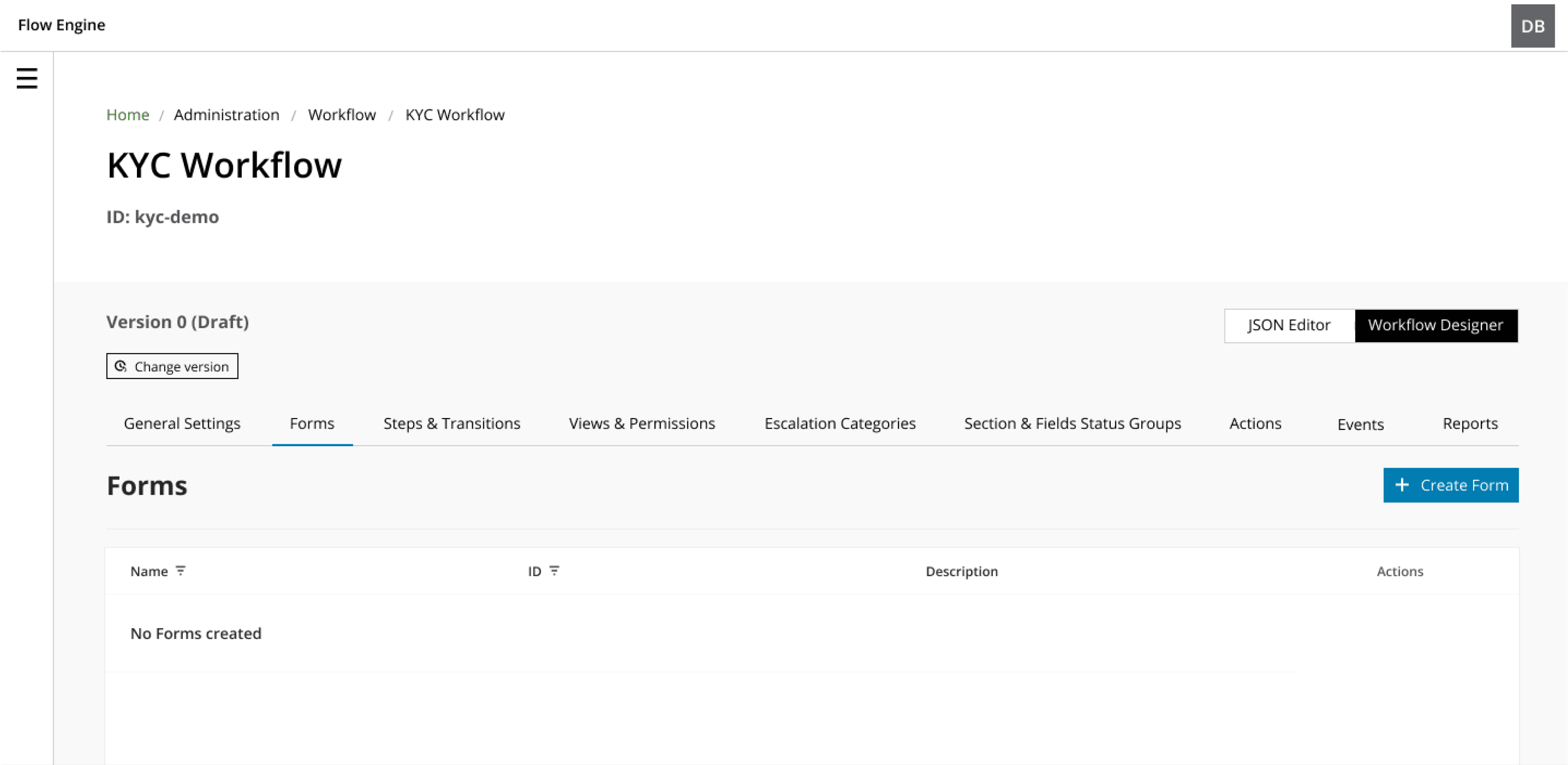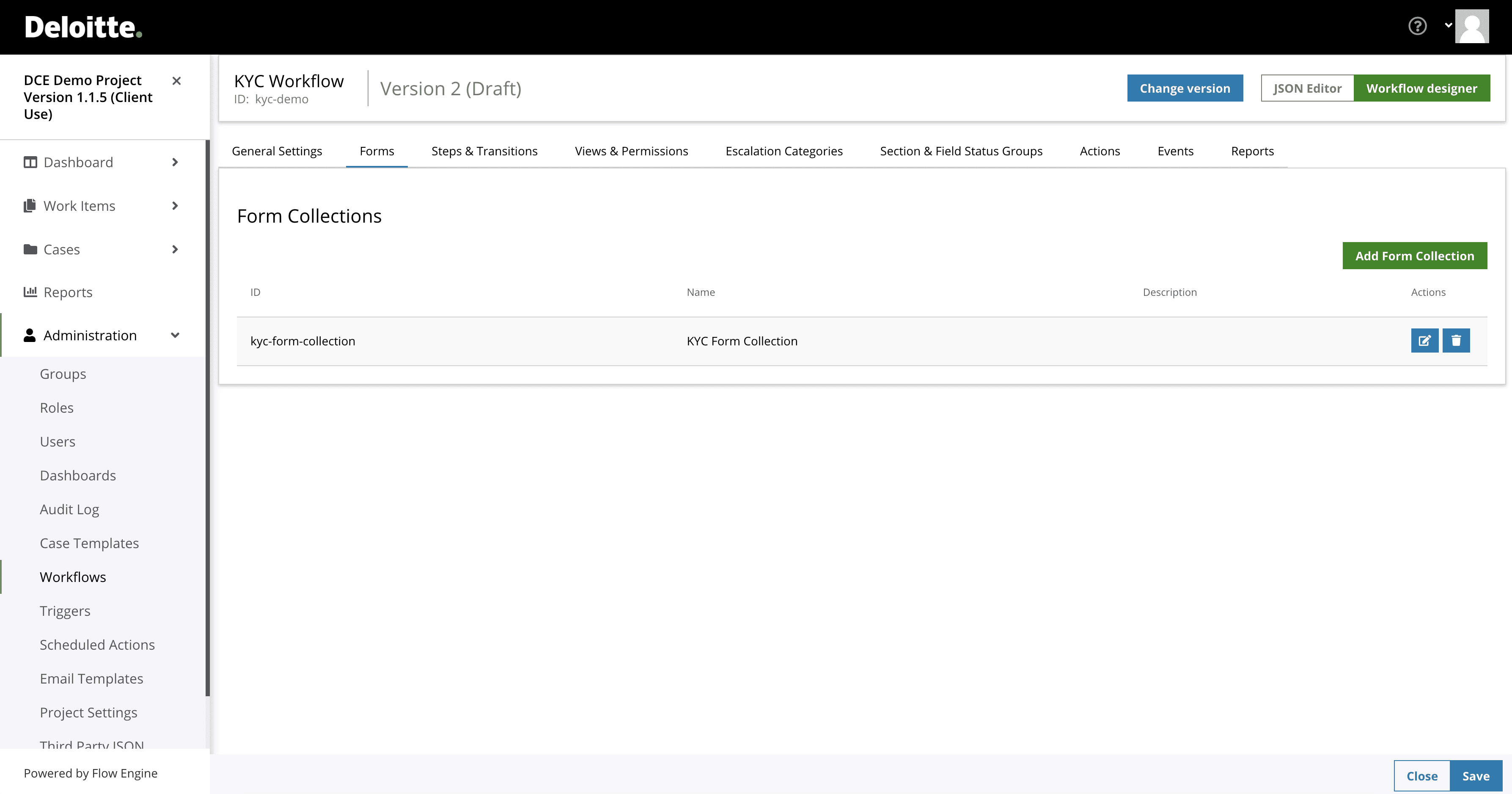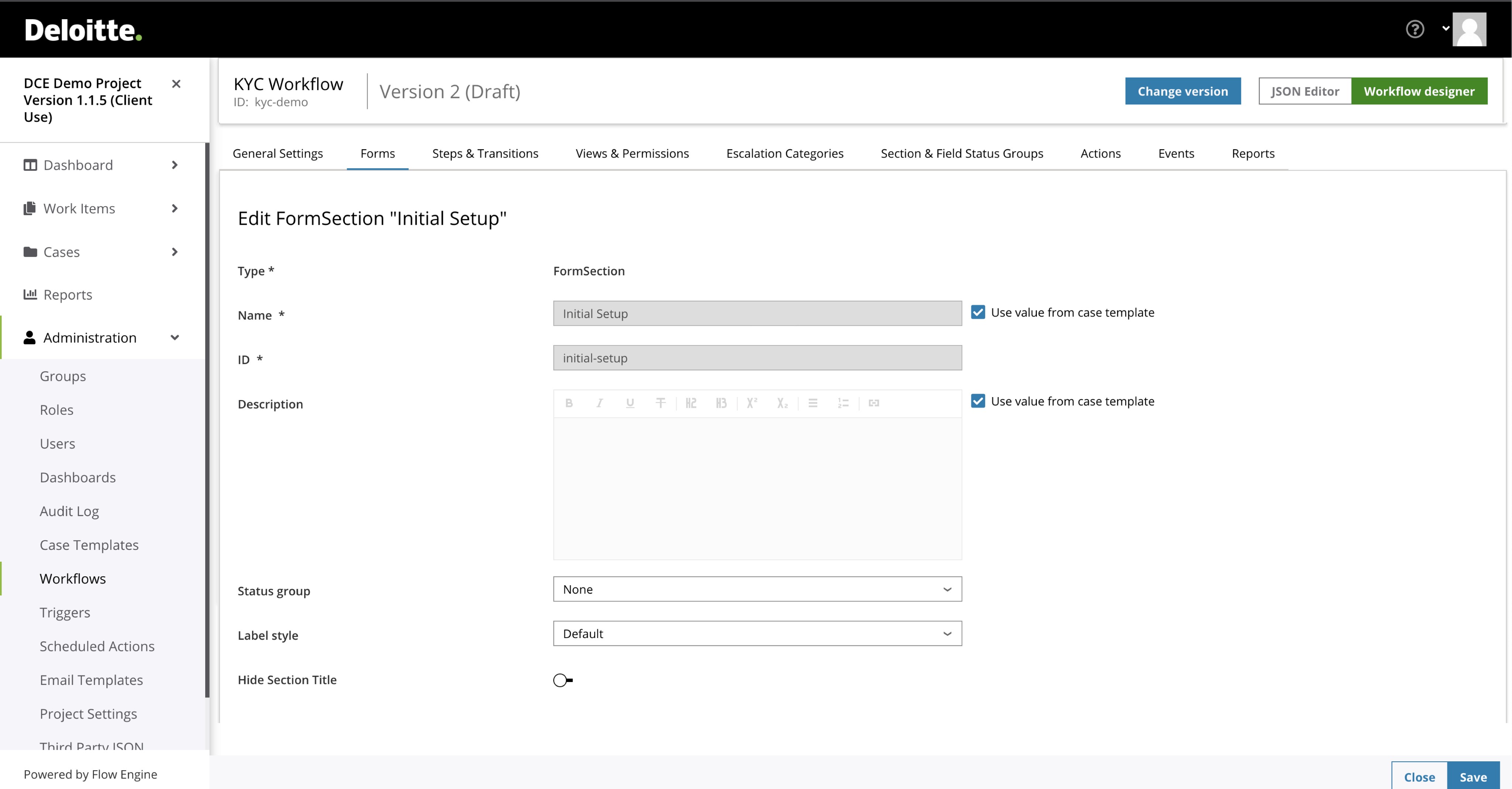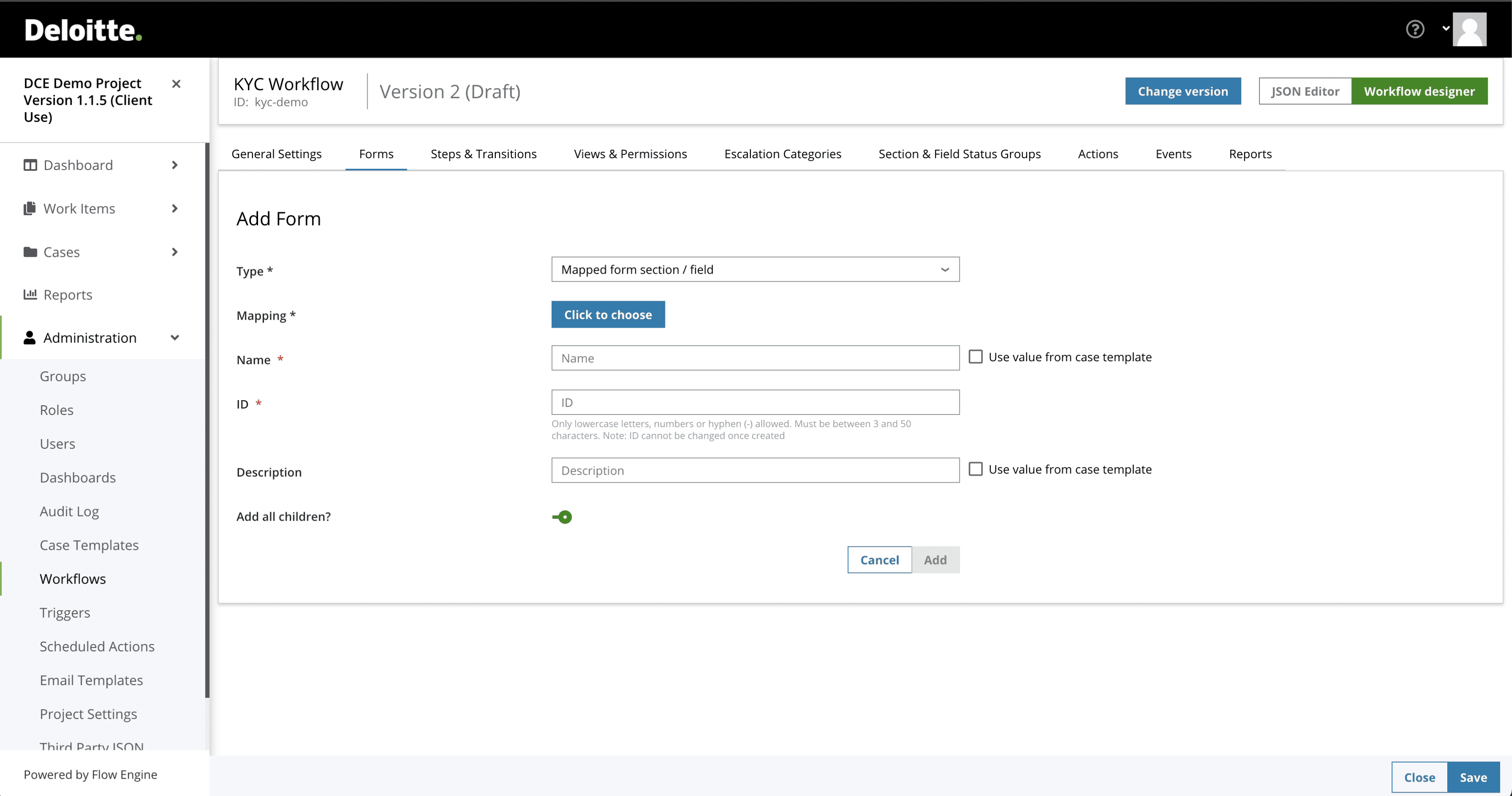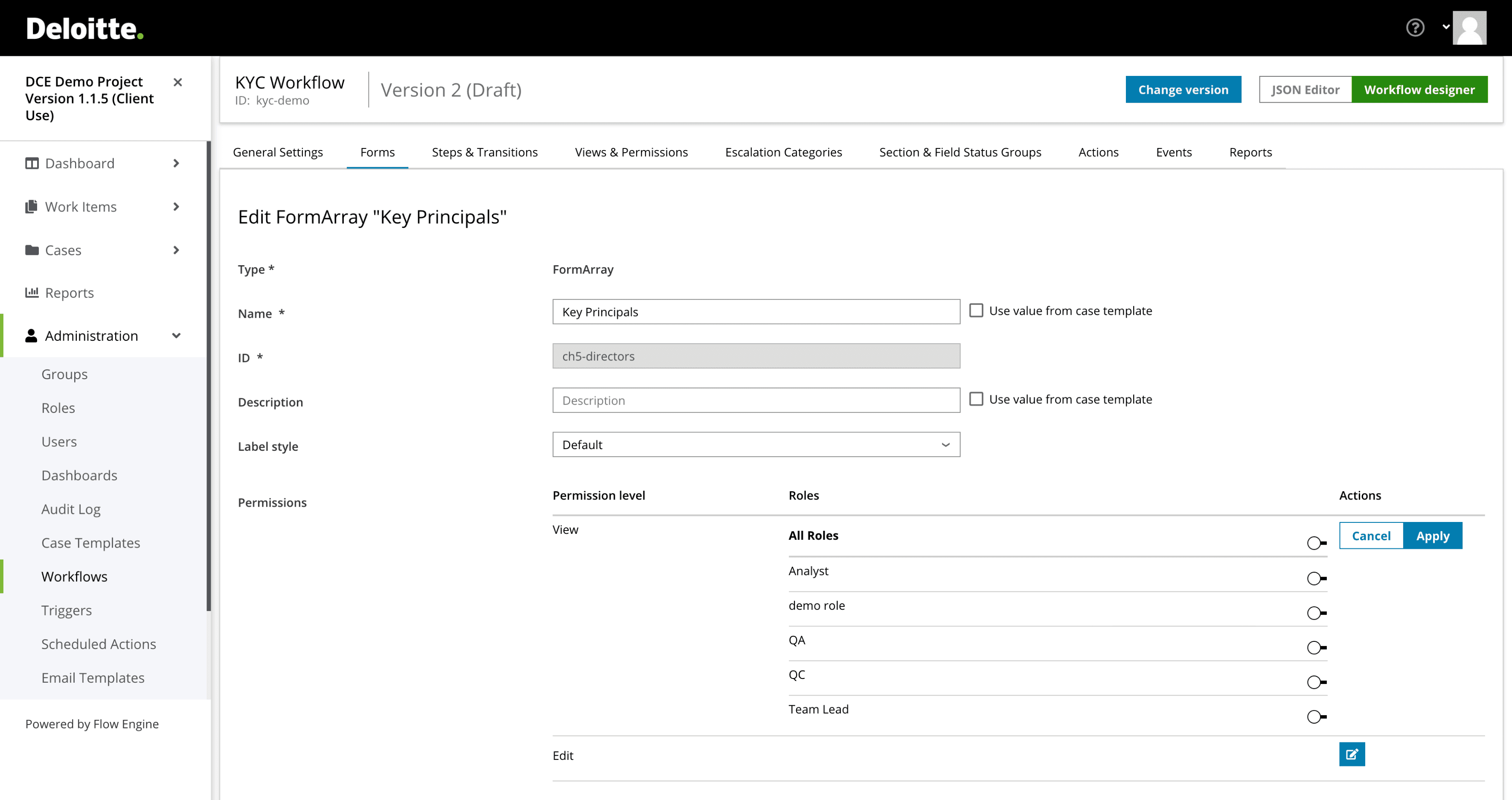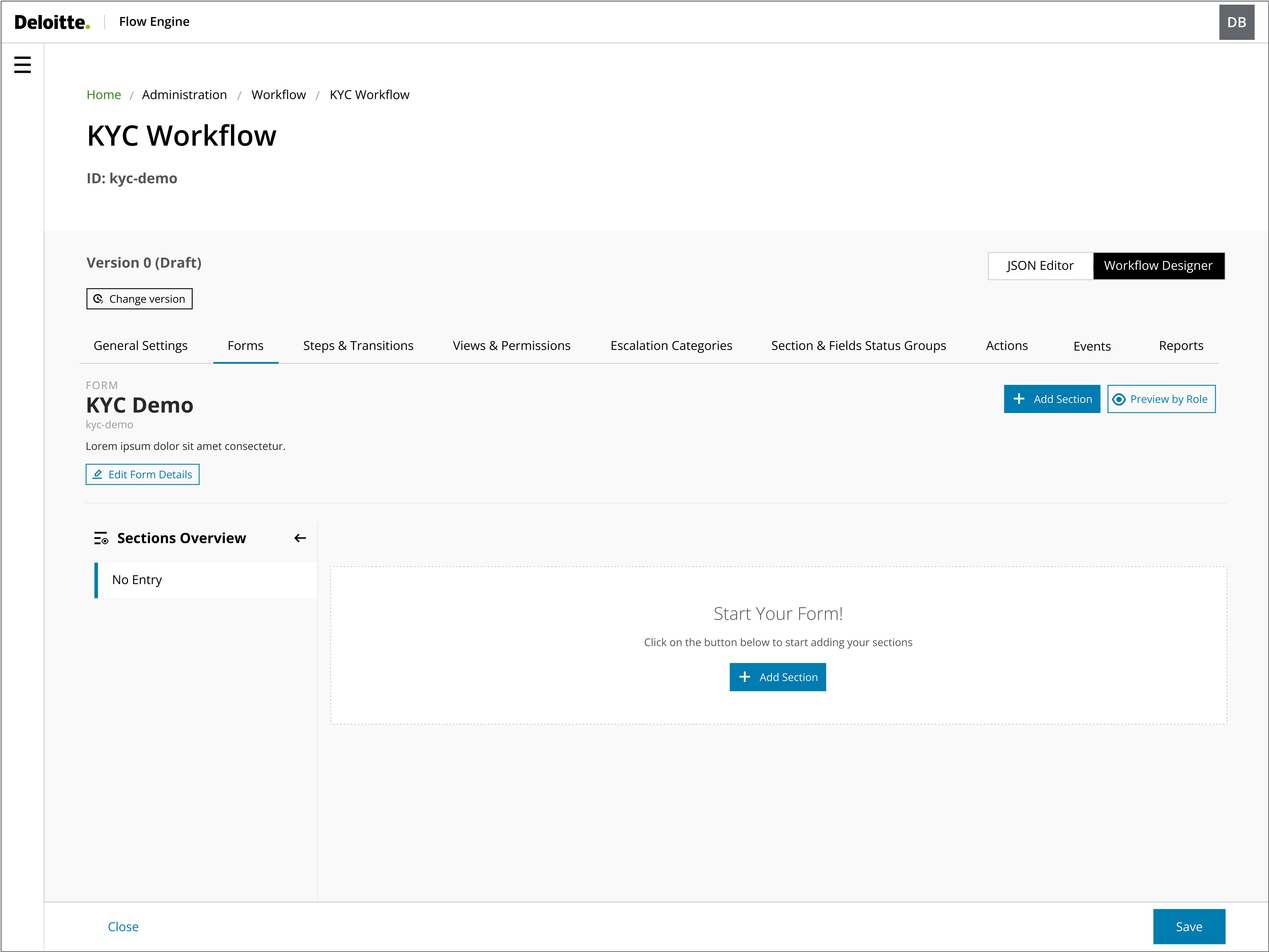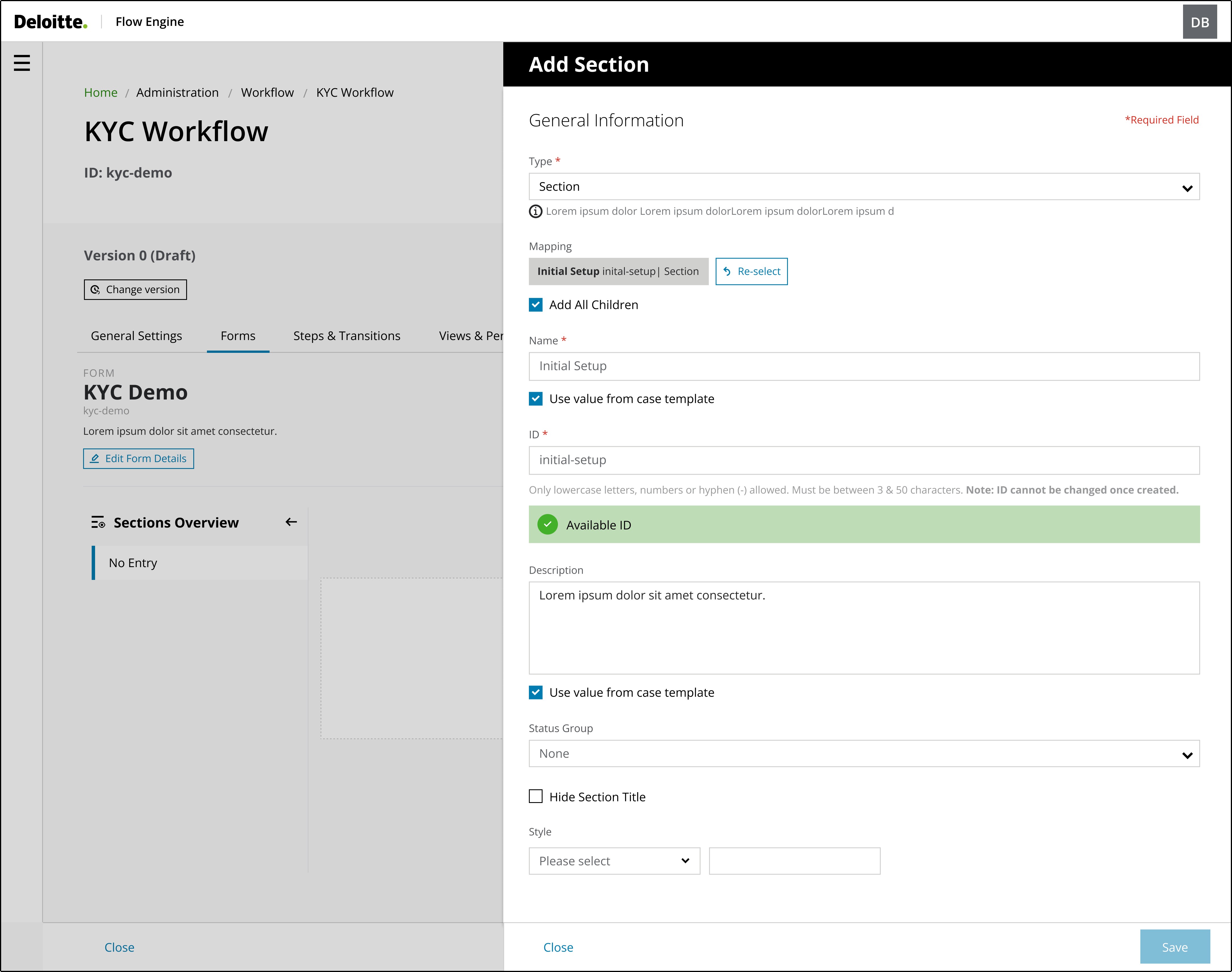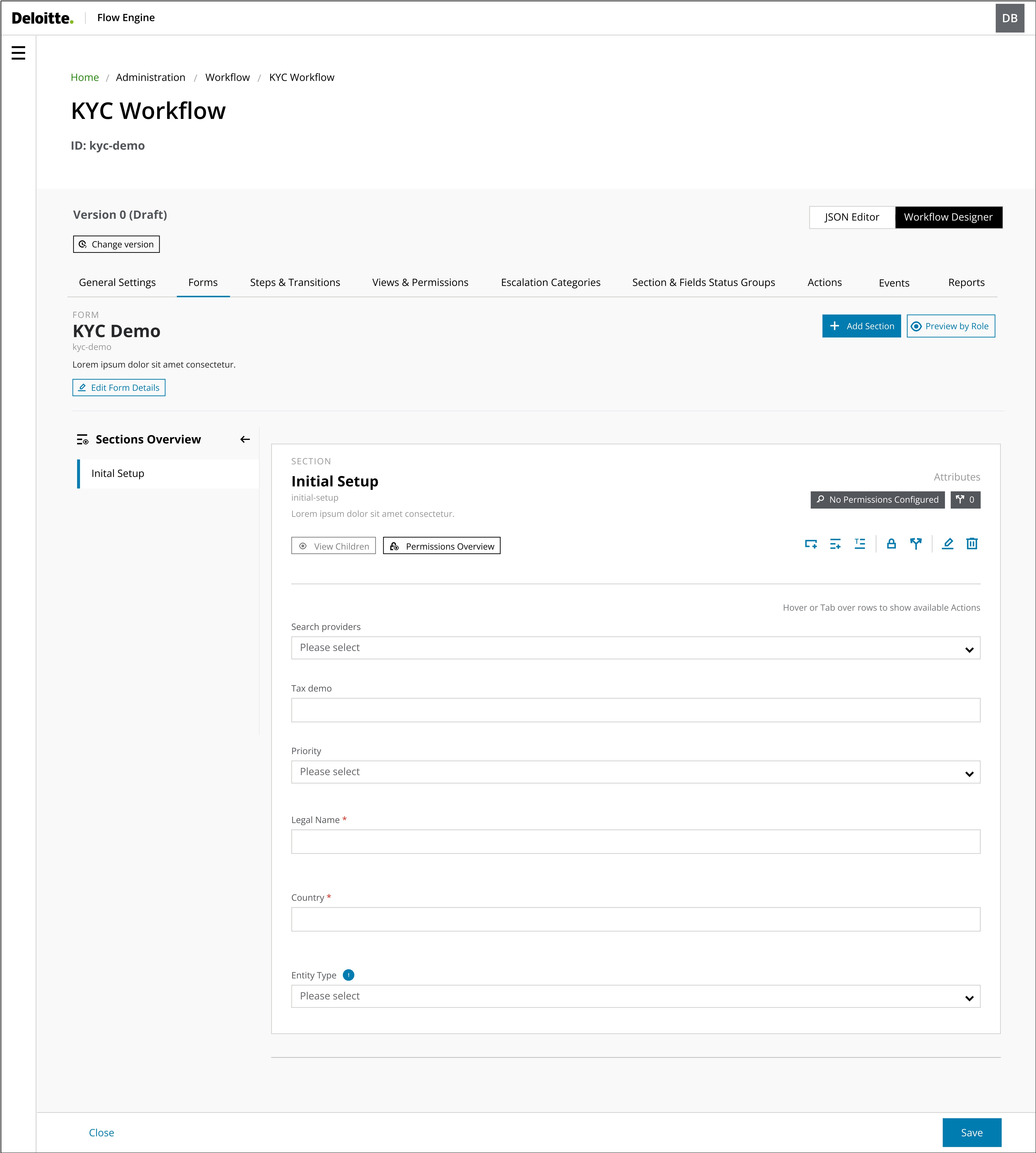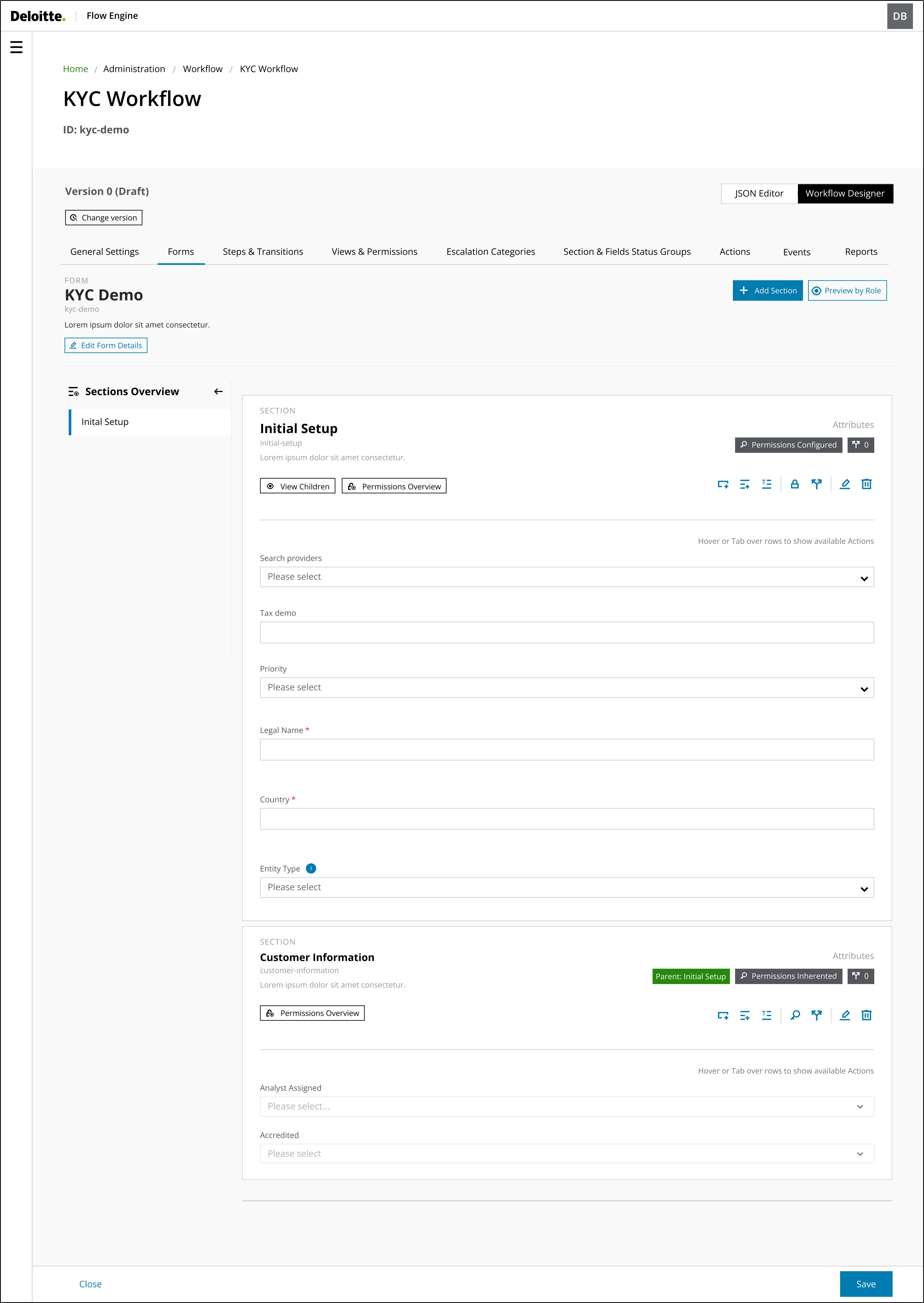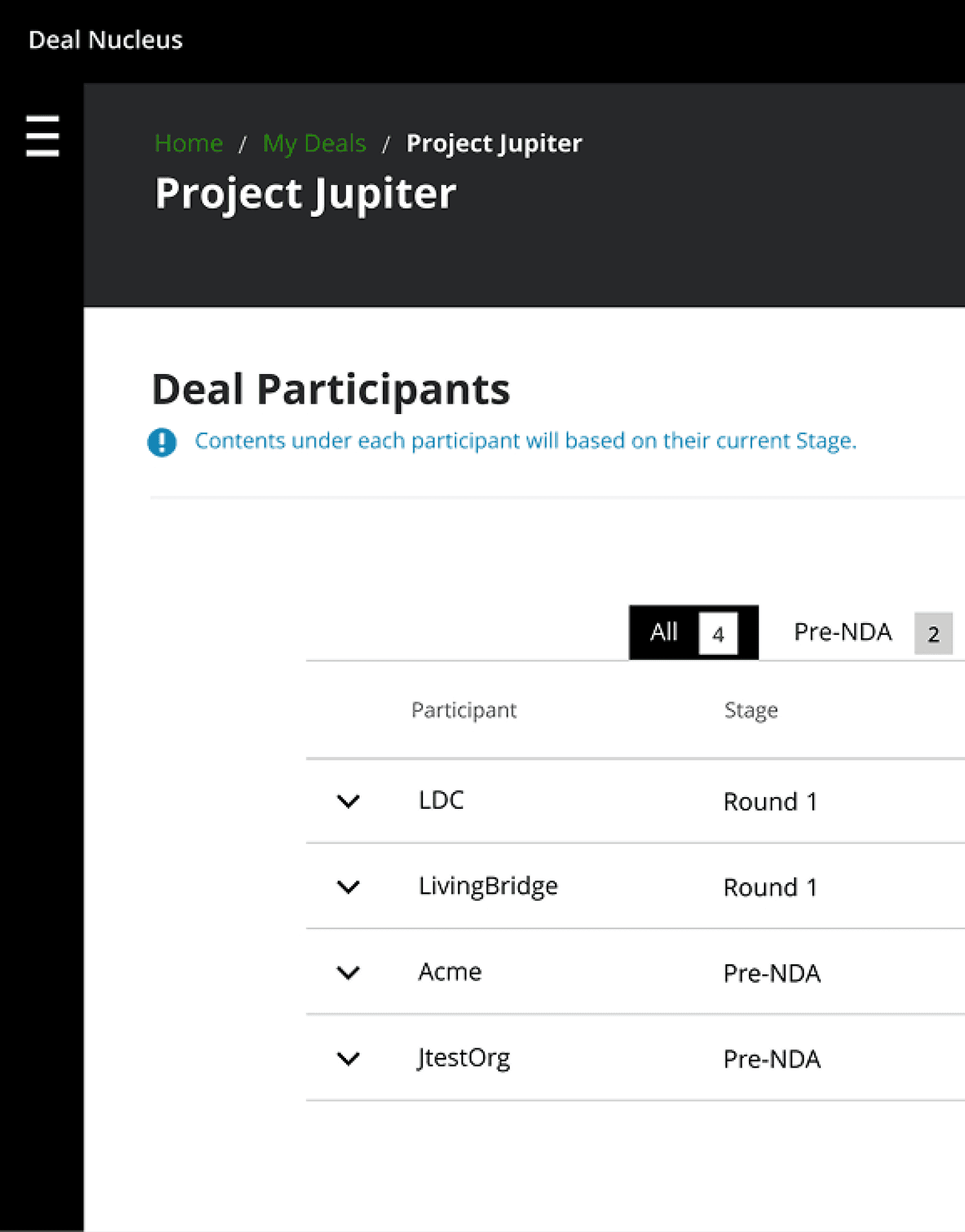Info
Role
Product Designer
Timeline
4 weeks
Team
Project Manager
Tech Lead
Developers
(Back/Front - End & QAs)
Tools
Figma
Miro
(A)
The Project
This feature allows System Administrators to build forms and add sections and fields, which end-users can fill out during case processing for KYC, AML, and other applications.
How Might We?
How might we improve the form builder to reduce configuration time and make previewing and editing forms easier before publishing?
Outcome
A boost of 75% in user satisfaction and faster task completion in the first 2 months after deploying.
(B)
Design Sprint
I worked on a 2-week Sprint, from discovery ideation to ready-for-development
The primary challenge was to ensure that the proposed changes would keep other components of the Flow Engine platform intact. I collaborated closely with developers to guarantee that the new design was integrated seamlessly without unnecessary deployment complexity.
01
Week: 1 - 2
Due to the feature's complexity, the first week I spent dissecting it to understand all its functionalities and creating a user flow to understand its interconnectedness. Also, I ran a workshop session with the main team stakeholders to define the business goals, problem statement, user story, and what we wanted to learn from users during the UX interview.
02
Week: 3 - 4
I ran a Context Inquiry and UX Interview with 5 participants and collated the feedback ready to represent to the team. Afterwards, I ran a workshop with the team to develop How Might We questions and a brainstorming session that allowed us to experiment with different ways to solve the design challenge.
03
Week: 5 - 6
Once the team was aligned with what we wanted to build, I drafted a new user flow and translated it into sketches and prototypes ready to test. I ran continuous usability testing with 5 participants and iterated on the prototype until it was refined and prepared for development.
(D)
Previous layout
(C)
User Research
I identified system administrators' pain points, goals, and needs using semi-structured interviews and task analysis with System Administrators. Then, I grouped insights using affinity mapping to prepare for ideation.
100%
of users expressed concern about how complex the form configurations were.
Ensuring the navigation and user journey are simplified is essential for improving task completion.
80%
of users think the relationship between sections was complex to track.
How easily can users understand the relationship within parent-children sections?
70%
of users used two separate windows to visualise the final form layout.
Visualising how changes affect the form for the end user was crucial in speeding up the process.
(F)
Feature #1
Form builder
The Form builder workflow was designed to be an intuitive interface.
This interface makes it easy for users to add sections and understand and navigate through the form sections, reducing confusion and errors and ultimately improving the user-friendliness and efficiency of the design.
Feature #2
Add sections
Testing the colour system across various visual impairments, such as protanopia, deuteranopia, and tritanopia, revealed key insights on contrast effectiveness, ensuring the palette remained distinguishable and accessible to users with colour vision deficiencies.
Upon testing the initial set of graph colours, I realised that the bright colours had the same hue, and to avoid confusion and possibly confuse users, those colours were removed from the colour palette.
Feature #3
Form visualisation
Previously, System Administrators spent significant time switching between screens to visualise how the form appeared to the end-user.
Implementing a real-time form visualisation feature reduced the time spent on this task and made it easier for administrators to identify and correct errors immediately. This enhancement streamlined the workflow, improving efficiency and accuracy in form configuration.
Feature #4
Parent-Children relationship
After users have added a parent section, they may need to add additional child sections or fields within that parent section.
The main goal of this interface was to provide users with a simple and easy method to add children's sections or fields while ensuring that they understand their relationships. The interface must be logical and intuitive, aligning with how users naturally structure information.
By implementing a design that mirrors users' real-life understanding of parent-child relationships, the aim was to establish a more user-friendly and efficient system. This approach significantly reduces cognitive load and enhances the overall user experience, as the system's structure aligns with users' expectations.
(G)
Insights
Usability testing and benchmarking determined the increase in user satisfaction, which showed that users spent less time on tasks.
The stakeholders received the new interface and found it to flow well. They found that the form-creation process was simplified and more intuitive, and they completed the task in a shorter period, which indicated improved task efficiency.
(H)
Lessons Learnt
01
Adapting Graphic colours for Digital use
A key lesson was the importance of involving users and stakeholders early and often in the design process. As we shifted to two-week sprints, rapid iteration was crucial. We achieved more user-centric and practical solutions by incorporating their needs and insights. This collaborative approach also fostered a sense of ownership and alignment among all participants.
02
Need for Accessibility and Colour Misuse
I learned the importance of understanding and aligning with user mental models. By profoundly analysing other applications and how users think and interact, we were able to design more intuitive and practical solutions. This approach ensured the product met user expectations, was technically feasible and enhanced the overall user experience.
03
Lack of a Design System
When tackling complex features, it's crucial to prioritise the user journey and iterative user testing. We identified potential pain points by mapping out users' different paths to achieving their goals. We also refined the design, making the feature a more intuitive and efficient experience. through testing
From idea to impact
You may also like
“Dedicated and detail-oriented designer with a strong growth mindset, always striving to improve and enhance user experiences.”
Ivana D.
Senior Product Designer at Deloitte UK
“Highly creative, hard-working designer with strong project management and communication skills. He excels at meeting deadlines, presenting ideas, and solving design challenges.”
Katherine M.
Marketing Manager at South Bank Colleges
“Proactive and insightful designer who quickly delivers quality work. At Helsa, his clickable prototype played a key role in securing VC-backed accelerator funding.”
Rob C.
Entrepreneur & Fintech Leader
Let's talk
drigofernando@gmail.com
